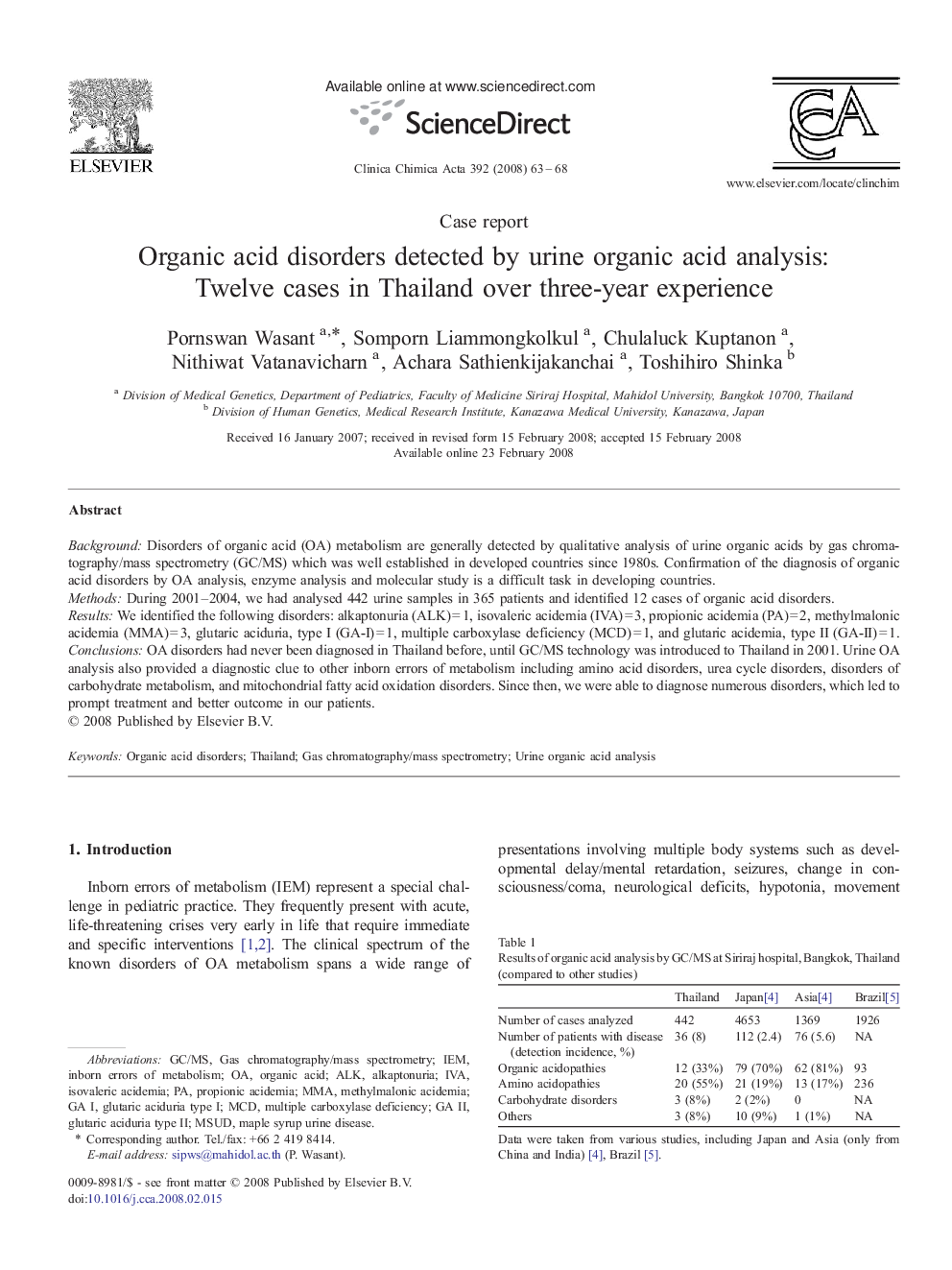| Article ID | Journal | Published Year | Pages | File Type |
|---|---|---|---|---|
| 1966983 | Clinica Chimica Acta | 2008 | 6 Pages |
BackgroundDisorders of organic acid (OA) metabolism are generally detected by qualitative analysis of urine organic acids by gas chromatography/mass spectrometry (GC/MS) which was well established in developed countries since 1980s. Confirmation of the diagnosis of organic acid disorders by OA analysis, enzyme analysis and molecular study is a difficult task in developing countries.MethodsDuring 2001–2004, we had analysed 442 urine samples in 365 patients and identified 12 cases of organic acid disorders.ResultsWe identified the following disorders: alkaptonuria (ALK) = 1, isovaleric acidemia (IVA) = 3, propionic acidemia (PA) = 2, methylmalonic acidemia (MMA) = 3, glutaric aciduria, type I (GA-I) = 1, multiple carboxylase deficiency (MCD) = 1, and glutaric acidemia, type II (GA-II) = 1.ConclusionsOA disorders had never been diagnosed in Thailand before, until GC/MS technology was introduced to Thailand in 2001. Urine OA analysis also provided a diagnostic clue to other inborn errors of metabolism including amino acid disorders, urea cycle disorders, disorders of carbohydrate metabolism, and mitochondrial fatty acid oxidation disorders. Since then, we were able to diagnose numerous disorders, which led to prompt treatment and better outcome in our patients.
